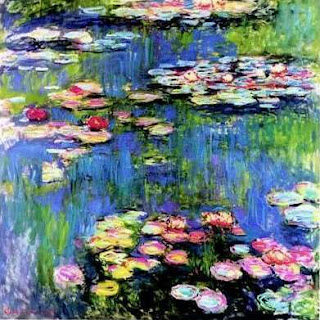Claude Monet
Another important factor was the rising of Modernism, which had a powerful impact on culture and society throughout Europe . After the monotony and constant routine/convention guided lives after the Renaissance, the Industrial Revolution leading to mass production, urbanization, etc., together with other factors which broke the mold in which society was set, resulted in a huge explosion in new ideas and ways of expression; this had, obviously, an impact in cinema: new techniques, genres, styles, were looked for in the whole of filmmaking, in order to break the demonstrate what society was going through.
3. New editing techniques were used, such as breaking the line of temporality in the shots (a flashback, for example, or a fantasy).
Mise-en-scene: a new variety of lighting situations were introduced, for example: single sources, off-screen actions indicated by shadows, etc.)
Camera angles were more varied (high-angles, low-angles), movement was used to convey points of view, graphic effects, etc; distance was also used (e.g.: close-ups to convey different effects.)
4. Abel Gance (25 October 1889 - 10 November 1981). He explored innovative filming techniques, as superimposition of images, extreme close-ups, and fast rhythmic editing. Many have criticized him because of his movies being too ingenuous or mediocre. La Roue / J’acusse / Napoléon
Jean Epstein (March 25, 1897, Warsaw – April 2, 1953, Paris) L'Auberge rouge (1923)/ Coeur fidèle (1923) / La Chute de la maison Usher (1928). He was an early film theoretician.
Germaine Dulac (17 November 1882 – 20 July 1942) Vénus Victrix, ou Dans l'ouragan de la vie (1917) / Les soeurs ennemies (1915; first film) / Le bonheur des autres (1918). He produces some pre-Surreal complex narratives, and his career went in decline since the advent of sound film.


No hay comentarios:
Publicar un comentario